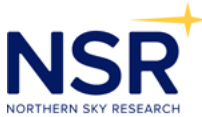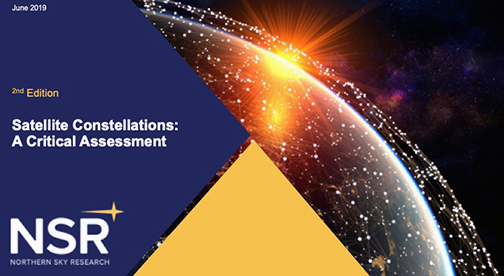
NSR’s industry standard report on the market for and viability of satellite constellations worldwide: Satellite Constellations: A Critical Assessment, 2nd Edition, has released.
The report provides a complete assessment of key satellite constellations set to disrupt the SATCOM market in the next decade. Through a bottom-up assessment of non-GEO demand across core applications, matched against the cost, project specifics and launch likelihood for each key constellation, NSR provides its foresight into this critical market and this latest report further examines the development of ground systems for HTS constellations, finding that next-generation terminals are a vital piece of the viability picture.

NSR forecasts a mixed outcome for operators planning projects involving satellite fleets. High-throughput constellations come with very high costs for satellite manufacturing and launch, as well as ground infrastructure. However, IoT constellations have a more favorable CAPEX-to-revenues ratio, driven by much cheaper satellites and diversification of demand for M2M/IoT services.
Demand for non-GEO HTS capacity and service is growing in all verticals, but it remains smaller than GEO at least until 2028. As such, NSR expects greater pressure on capacity pricing going forward, with an aggressive industry focus on addressing consumer broadband customers later in the forecast.
The case for non-GEO constellations remains challenging, given high CAPEX considerations and long development times. However, interest and investment remain high, with more funding and value chain collaboration shown in recent years. Ground terminals remain a significant challenge, but technology is developing quickly. Bottom Line: Closing the business case will require a thorough assessment of upstream costs and technology development, coupled with vertical-specific expertise to effectively target difficult and hard to reach markets.
Dallas Kasaboski, Senior Analyst and report co-author, said that satellite manufacturing and launch costs are quite a significant hurdle to overcome for constellations, with the added challenge of replenishment, or the cost of a long-term, ongoing system. While mass production of satellites has been shown to significantly reduce cost, supply chain management becomes increasingly more challenging. Then, the trade-off often comes at the price of a more expensive ground network infrastructure.
Shagun Sachdeva, Senior Analyst and report co-author, noted that constellations aim to offer higher throughput, lower latency, and global connectivity. And while the Total Addressable Market (TAM) for these services is substantial, the challenges of competition with terrestrial and 5G services, as well as price-sensitive addressable markets, limit the captured market. However, new players such as Amazon show growing interest in integrating terrestrial and satellite businesses, creating new opportunities, competition, and changing market dynamics.

